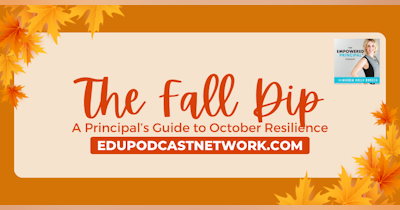🏳️ Iterate or Fail
Online learning is a modality that is here to stay and is growing, regardless of how we feel about it. Even before the pandemic, online learning was becoming more prevalent. In recent years though, it has gone from a niche modality to a very common one (Schroeder, 2022). It seems like countless institutions want to grow their online offerings, and even businesses are looking to expand their online courses. As this is happening, I am noticing a trend, a lot of people out there don't think it's that hard to create an online course; well, at least a lot of administrators feel that way 😉.
The reality, though, is that creating a good online course is more complicated than we think. Consider this: creating a learning experience, whether online or in-person, is not easy. We often plan and plan lessons, activities, and assessments, only to find that, well... people don't always behave the way we anticipate, and learning is really freaking hard sometimes. Teaching is hard because it means helping a room full of unique human beings with different desires and backgrounds learn. It is a fantastic task but hard. Now, add into the mix an online course, and you don't just have to get people to learn, but you also have to build a functioning course site. You have to design it so that it is usable and gives students the correct information but doesn't get in the way. Essentially, you have to build an easy-to-use website on top of designing for learning. This task is complicated, messy, and hard!
See, the hard fact we need to all hear is that we can't predict the future, which means we can't just churn out perfect online courses. No course we ever create will be perfect or, quite frankly, great when we are first done. Yet I see so many institutions and organizations act like this isn't the case; they linearly produce a course and put it out there, assuming they can just keep using it as is indefinitely. This is why we have so many bad online courses out there, and it needs to change. If we are ever going to build excellent online learning experiences, we need to start iterating as we develop.
🔄 What does iteration look like?
When I went to Israel in college, I was introduced to the process of making olive oil, or at least the traditional way. What amazed me was how repetitive the process was. They used a basket to press the olives for oil. They layered them and would first go through this pressing process to extract some oil, then move to another basket and repeat the process, and then another and another. The idea was that with each stage, they squeezed out more and better oil. Iteration is similar; it is repetition, doing a process over and over in a cyclical manner to quickly extract the best possible creation. We see this idea in the process that led to iterative design or development, which we call Agile Project Management. In Agile, teams repeat stages of ideation, design, development, and testing over short two-week intervals called sprints. The reason they do this is to create quickly and fail fast if they have to. They quickly learn what doesn't work while seeing finished products quicker, and if done right, it all leads to a better result in the end.
Iterative course development takes these ideas from Agile PM and applies them to the course development process. Over the years, many different versions of this have appeared, but the most popular and my favorite is the “Successive Approximation Model” or “SAM” for short. So how does it work? Well, a lot of people have implemented the SAM model in different ways, but here is my take on how to do it…
- First, you start by gathering information and planning. Here, you work to identify your learners, the learning goals, and other requirements for a course (Sites, 2016). It is here that I like to have the Subject Matter Expert or instructor articulate in a couple of bullets the needs for the course as they see it and prioritize those based on importance and urgency.
- Next, you go through iterative time boxes, which I like to call cycles, and during these “cycles,” you repeat a circular workflow. It looks something like this…
See, the magic in agile iterative course development is that, in small ways, you are constantly planning, experimenting, testing, building, and reviewing your ideas. By the time you finish a course, it has been tried and refined. When we follow this process, I believe we make better online courses for a few reasons.
Iteration Empowers Fearless Creation
In an iterative process, you can create mock-ups and prototypes early on and test them before anything is actually released or used by students. This gives you and your team time to experiment, test new ideas and fail early if necessary. This type of process leads to creative ideas that will actually engage students.
Iteration Improves Continuously
This may seem obvious, but it is worth highlighting. In an iterative approach to course development, you and your team are always testing and improving what you prototype or build. In a process like this, you get multiple chances to test if something will function correctly in the LMS or if learning will actually occur. Improvement is part of the DNA of this process.
Iteration Acknowledges Imperfection & Actively Works to Eliminate it
An iterative development process assumes that we won't get something right the first time, so it builds a system to experiment and test our ideas first. It works to squeeze out our best work and remove our worst. This process won't get rid of all imperfections, but it will reduce them.
🧠 Where can you learn more?
There are a lot of resources that you can review to get a better idea of what iterative course development looks like, but here are just a few that have helped me.
- Michael Allen's Guide to E-Learning - Michael Allen goes into extensive detail on the SAM model for agile course development in this guidebook. If you want to gain a deep understanding of how you can implement a model like this, it is the perfect book for you.
- LinkedIn Agile Instructional Design Course - If you are looking for a quicker overview and another take on the SAM model, this course is perfect. Richard Sites does a great job of giving a basic overview of the process with some ideas for how you could implement it.
- Shape Up - Ryan Singer's Shape Up book is not about course development specifically, but Ryan and the Basecamp team have an interesting take on what Agile Project Management should look like. They introduce this pitch planning and cycle-based project management style that transformed how my team and I work. If you want to learn what core things you need to do to start getting work done that matters, this book is perfect for you.
At the end of the day, online learning is growing, and we have an opportunity to create dynamic interactive learning experiences that people can access from their homes. To do this though, we need to seek a process that squeezes our best out of us, and I believe iterative course development is the powerful approach we need to pull this off!
Guest Author: Josh Swartz, co-host HiTech Podcast
Works Cited:
Schroeder, R. (2022, July 26). Online learning, from the margins to the center. Inside Higher Ed | Higher Education News, Events and Jobs. https://www.insidehighered.com/digital-learning/blogs/online-trending-now/online-learning-margins-center
Sites, R. (2016, June 9). Agile Instructional Design. Linkedin Learning. https://www.linkedin.com/learning/agile-instructional-design/



